When we travel overseas one of the first things we look at are the recommended hikes for the region. Hiking in another country can give you an insight into a landscape that is unlike any other you have seen before.
With the amount of hiking and trekking we have done we have learnt a few things about what to wear hiking and what to pack with you. This differs depending on the difficulty and duration of the hike.
None-the-less, here are 8 tips on what to wear hiking and what to pack for your next day hike.
8 Tips on what to pack and what to wear hiking
Water & Windproof Jacket
If you go hiking in a mountainous area, the weather can suddenly change. In any case, the higher you go the cooler the temperature will be. It is therefore smart to always pack a water & windproof jacket.
This way you avoid getting too cold when the wind suddenly starts to pick up speed and you are protected against a rain shower.
There are plenty of lightweight and stylish rain jackets these days. Choose a jacket that does not weigh too much, so if you’re not wearing it your backpack isn’t weighing you down.
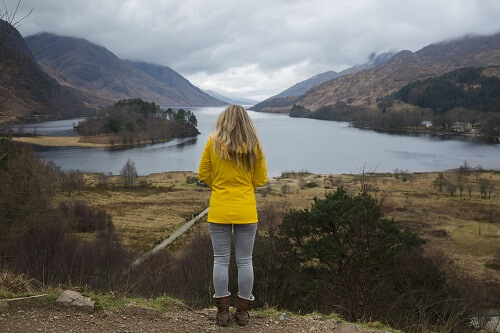
Also look for one that has good ventilation. If you’re in a tropical area you may need to protect yourself from rain even though it is hot. You can steam up very quickly if your jacket doesn’t have ventilation pockets.
Another handy feature of these jackets is that they often have a space for your earphones. You can listen to music while hiking in heavy rain and your phone/music device will be safe.
Fleece Vest
Depending on how cold it is where you walk, it is also a good idea to carry a fleece or down vest.
Layers, layers, layers!
If you wear different layers then you can easily put something on or off when the weather changes.
We recommend a t-shirt, a vest and a waterproof jacket. You can also add another lighter jacket under the vest depending on your environment.
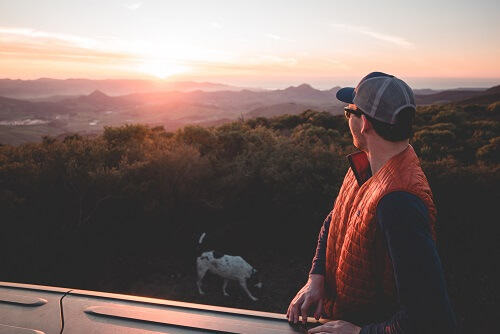
Quick-dry T-shirt
And then of course a shirt or t-shirt as a bottom layer – the basic layer. It can be any type of t-shirt, you do not necessarily have to wear a hiking shirt. But if you can get your hands on a moisture-wicking, quick-drying shirt it will keep you much more comfortable
If you can get a shirt made from Merino wool, do it! They are so lightweight yet they keep you cool when it’s warm and warm when it’s cool. Definitely worth the investment!
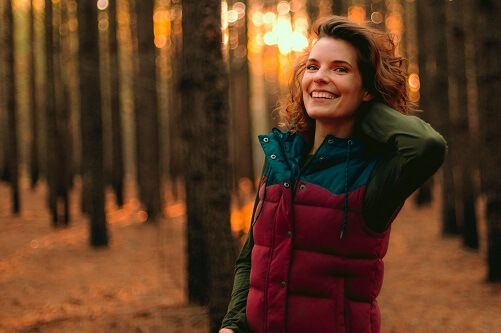
Zip-off Hiking Pants
Okay, I know it sounds like something straight out of 1999. But trust me on this one…zip-off pants will be your best friend on a long hike.
You can wear them long or short (depending on terrain and weather), they have multiple pockets and they are usually tear proof and fast-drying.
Why do you need the pockets? While you’re hiking you can have easy reach of phones, music, tissues, snacks and more without having to go through your backpack every time you want something small.
These days zip-off pants can actually look quite trendy. I have a good-looking pair that I wear with my stylish wind proof jacket. When I’m travelling I will happily wear this outfit out to dinner at a (semi) nice restaurant. If you think zip-off pants aren’t your thing, shop around and may be surprised.
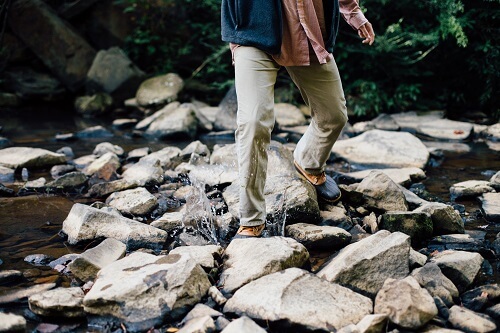
Good Walking Boots
A good walking shoe will differ for everyone. It also depends on the type of hike you are doing and the duration.
Shoes that you wear on a hike on flat terrain for one day may be very comfortable. The same shoes on a multi-day hike in the Himalayas might end up as a very different story.
The best thing you can do is try on multiple pairs of shoes and just see one you feel most comfortable in.
I always wear my hiking boots when going for even a short hike of a few hours. They are so comfortable, blister proof, water proof and very sturdy.
How do you pick the right shoe? It’s mainly by comfort level and getting the right fit, but here are a few things you can look out for:
- Shoes vs boots – I find boots that rise to just above the ankle provide the most support
- Tread – you want a lot of grip of your hiking boots. Much more than a regular running shoe.
- Blister free – some boots will claim that they are blister proof. Look out for this because they are usually very good.
- Water proof – this is not essential but is very handy. At the very least the base, toe and heel of the boot should be water proof.
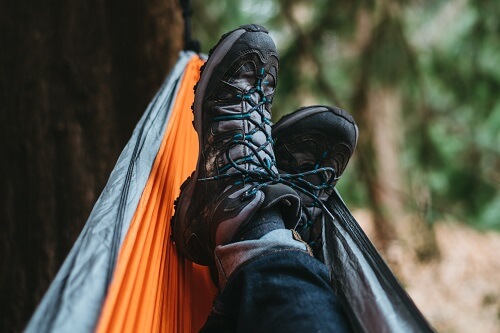
In addition to the above tips on what to wear hiking, it is smart to put these things in your backpack:
Food: Fruit, nuts or lunch for day hikes. For multi-day hikes we recommend nuts, dried fruit and dried dinners that you can heat up on your portable burner.
Camera: We often take the Nikon AW1 with us as it is shock proof and water proof.
Sunscreen: Try roll on sunscreen because it won’t leak in your bag. Try to avoid spray on sunscreen as it is not good for the environment.
DEET/mosquito guard: Handy if there are a lot of mosquitoes – again, try roll on and avoid sprays.
Phone/Personal Location Beacon (PLB): Always handy in case of emergency. Note that there may not be reception where you are hiking. This is where a PLB will come in handy. Only let off the PLB if you are in an emergency (not available in all countries). It is best to let authorities know where you are hiking before you leave.
Money: Only a small amount, you never know when you’ll need it.
A map: If the track is not indicated correctly or poorly signed it’s smart to bring a map, directions and a compass. Alternatively, if it’s a simple track you can research track notes before your hike and either take photos on your phone that you can refer to or write down your own detailed notes. You don’t want to come to a cross track and not know which way to turn.
Survival kit: Yep, you never know what can happen. You can buy these or make one yourself. You should always carry bandages, safety pins, tweezers, water sterilisation tablets, pocket knife, flint/fire starter, whistle and an emergency foil blanket.
Power bank: Definitely not a necessity, but can be useful to charge your phone or camera.

Water, water and more water!
This tip has less to do with clothing, but is an indispensable tip that might be mega obvious. Please bring enough water if you are going to do a hike.
You should be carrying 1 litre of water per person per two hours that you go hiking. We sometimes take less than that, especially when we know that a walk takes a certain number of hours and we are sure that we can drink enough at the car or at the end of the day.
You can of course also check in advance if there are water points along the way during your hike.
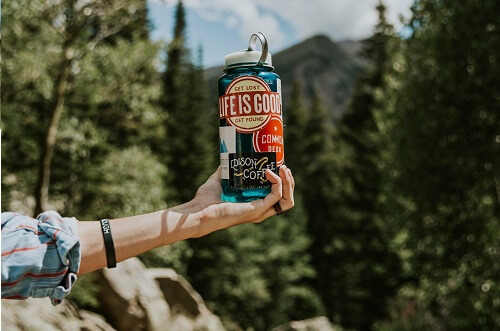
Choose the right backpack
The type of backpack you choose to carry will depend on your hiking style. Much like the shoes, it will depend on the terrain and the duration of the hike.
Do you need to carry a tent, food, water, clothes, cooking gear, ropes? Or are doing a day hike and just need water, snacks and your emergency kit?
Either way, make sure the backpack is fit for hiking and not a fashion backpack.
What does that mean? Here are a few things to look out for:
- Moisture wicking.
- Good ventilation to keep your back a dry as possible.
- Extra support and padding on the hips and back.
- Adjustable straps and straps to go around your chest and waist (takes a lot of pressure off your shoulders).
- Different compartments e.g. small and medium sized zippered areas, a larger storage area, an outside pocket and a space for your water bottle.
- Not too big, small or heavy, depending on the hike that you are doing.
On the note of your backpack, please make sure you are not over-packing. Every kilo that you carry at the start of your hike will feel like 5 kg by the end of it. If you don’t need that extra pair of undies, don’t take it!
You may also want to have a waterproof cover for your backpack. If you get caught in the rain protecting your backpack from the weather will mean dry food, phones and cameras
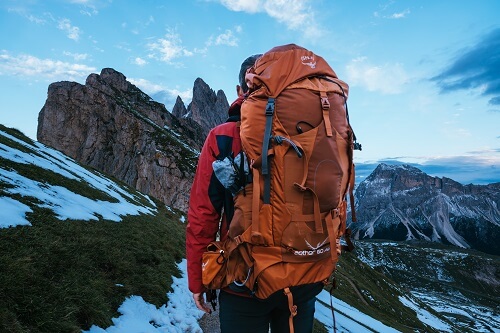
Arrive Prepared!
Next time you go out for a day hike or a multi-day hike, make sure you are prepared. Use our suggestions to make sure you have the correct gear so that you are comfortable and prepared for any situation.
If you have any other tips or any questions on what to wear hiking, get in touch.

